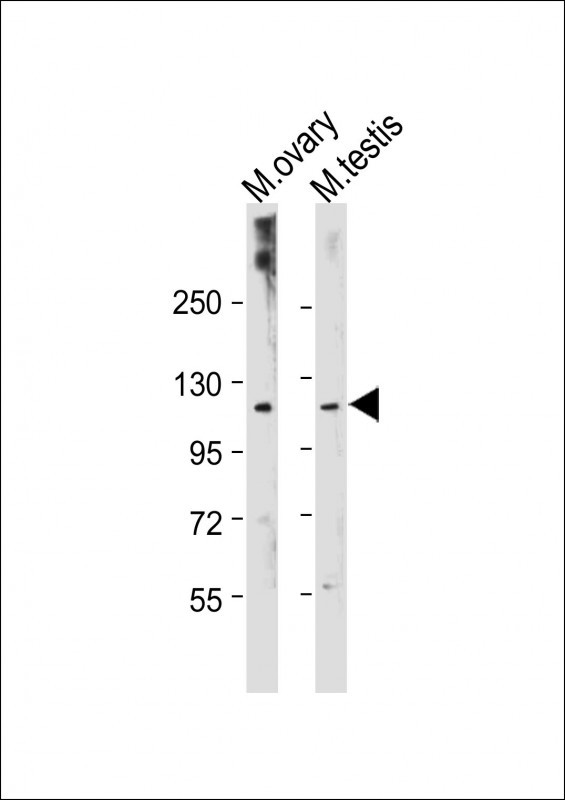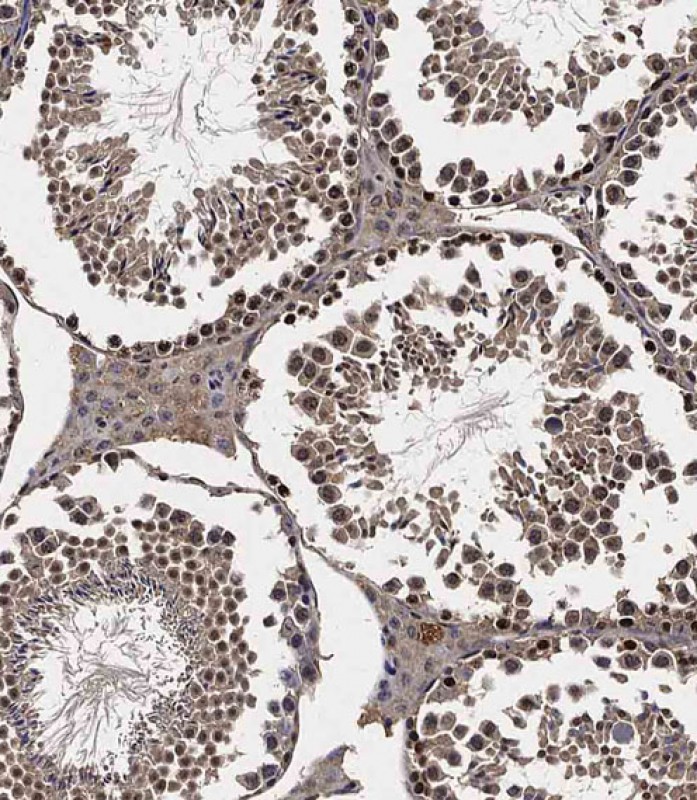


| WB | 1/500 - 1/2000 | Human,Monkey |
| IF | 咨询技术 | Human,Monkey |
| IHC | 1/200 - 1/1000 | Human,Monkey |
| ICC | 1/200 - 1/1000 | Human,Monkey |
| FCM | 1/200 - 1/400 | Human,Monkey |
| Elisa | 1/10000 | Human,Monkey |
| Aliases | Serine/threonine-protein kinase LATS2, Kinase phosphorylated during mitosis protein, Large tumor suppressor homolog 2, Serine/threonine-protein kinase kpm, Lats2 {ECO:0000312|EMBL:AAH530281} |
| Entrez GeneID | 50523 |
| WB Predicted band size | 115.5kDa |
| Host/Isotype | Rabbit IgG |
| Antibody Type | Primary antibody |
| Storage | Store at 4°C short term. Aliquot and store at -20°C long term. Avoid freeze/thaw cycles. |
| Species Reactivity | Mouse |
| Immunogen | This Mouse Lats2 antibody is generated from rabbits immunized with a KLH conjugated synthetic peptide between 1000-1027 amino acids from the C-terminal region of mouse Lats2. |
| Formulation | Purified antibody in PBS with 0.05% sodium azide. |
+ +
以下是关于UBE2I抗体的3篇参考文献,包含文献名称、作者及摘要概括:
---
1. **文献名称**: "UBE2I (UBC9) SUMOylation and its role in DNA double-strand break repair"
**作者**: Y. Li et al.
**摘要**: 该研究利用UBE2I抗体通过免疫沉淀和Western blot技术,揭示了UBE2I在DNA双链断裂修复过程中通过SUMO化修饰调控BRCA1复合体的功能,强调了UBE2I在基因组稳定性中的关键作用。
---
2. **文献名称**: "Characterization of UBE2I inhibitors for therapeutic targeting of SUMOylation in cancer"
**作者**: S. T. Hashimoto et al.
**摘要**: 研究通过UBE2I抗体进行免疫荧光和流式细胞术分析,发现抑制UBE2I的SUMO化活性可诱导癌细胞凋亡,并抑制肿瘤生长,为癌症治疗提供了潜在靶点。
---
3. **文献名称**: "Subcellular localization and dynamic regulation of UBE2I in neuronal cells"
**作者**: M. K. Lee & J. P. Park
**摘要**: 该文利用UBE2I抗体结合共聚焦显微镜技术,发现UBE2I在神经元中的核-质穿梭受钙信号调控,并参与突触可塑性相关蛋白的SUMO化修饰,为神经退行性疾病机制提供了新见解。
---
**备注**:上述文献为示例,实际引用时需根据具体研究领域补充真实文献来源(可通过PubMed或Google Scholar搜索关键词“UBE2I antibody + SUMOylation/DNA repair/cancer”获取)。
UBE2I antibody targets the ubiquitin-conjugating enzyme E2I (UBE2I), also known as UBC9. a critical component in the SUMOylation pathway. This post-translational modification involves attaching Small Ubiquitin-like Modifier (SUMO) proteins to substrate proteins, regulating diverse cellular processes such as nuclear transport, DNA repair, transcriptional regulation, and stress responses. UBE2I specifically catalyzes the transfer of SUMO from the E1 activating enzyme to target substrates, often interacting with E3 ligases for substrate specificity.
Antibodies against UBE2I are widely used in research to study its expression, localization, and function in physiological and pathological contexts. They are essential tools in techniques like Western blotting, immunoprecipitation, and immunofluorescence, helping to detect UBE2I levels in cell lines, tissues, or disease models. Dysregulation of UBE2I has been linked to cancers, neurodegenerative disorders, and immune diseases, making these antibodies valuable for exploring molecular mechanisms or therapeutic targets.
UBE2I antibodies are typically produced in hosts like rabbits or mice, with reactivity across human, mouse, and rat samples. Validation includes testing for specificity via knockout controls or siRNA knockdown. Researchers also use them to investigate SUMOylation dynamics in response to cellular stressors, DNA damage, or signaling pathway activation. Their applications extend to diagnostic research, as UBE2I overexpression in certain cancers correlates with tumor progression and poor prognosis.
×